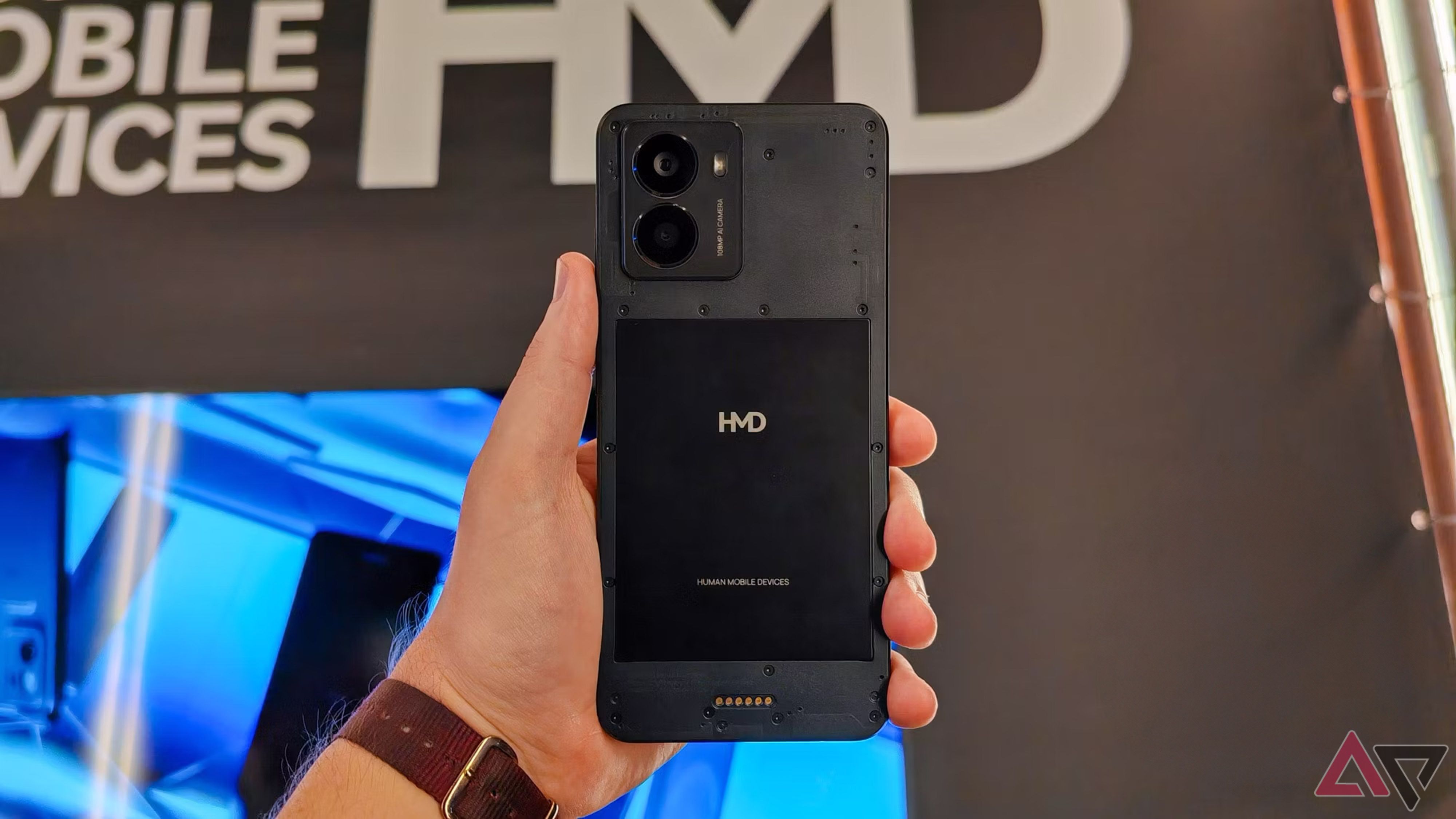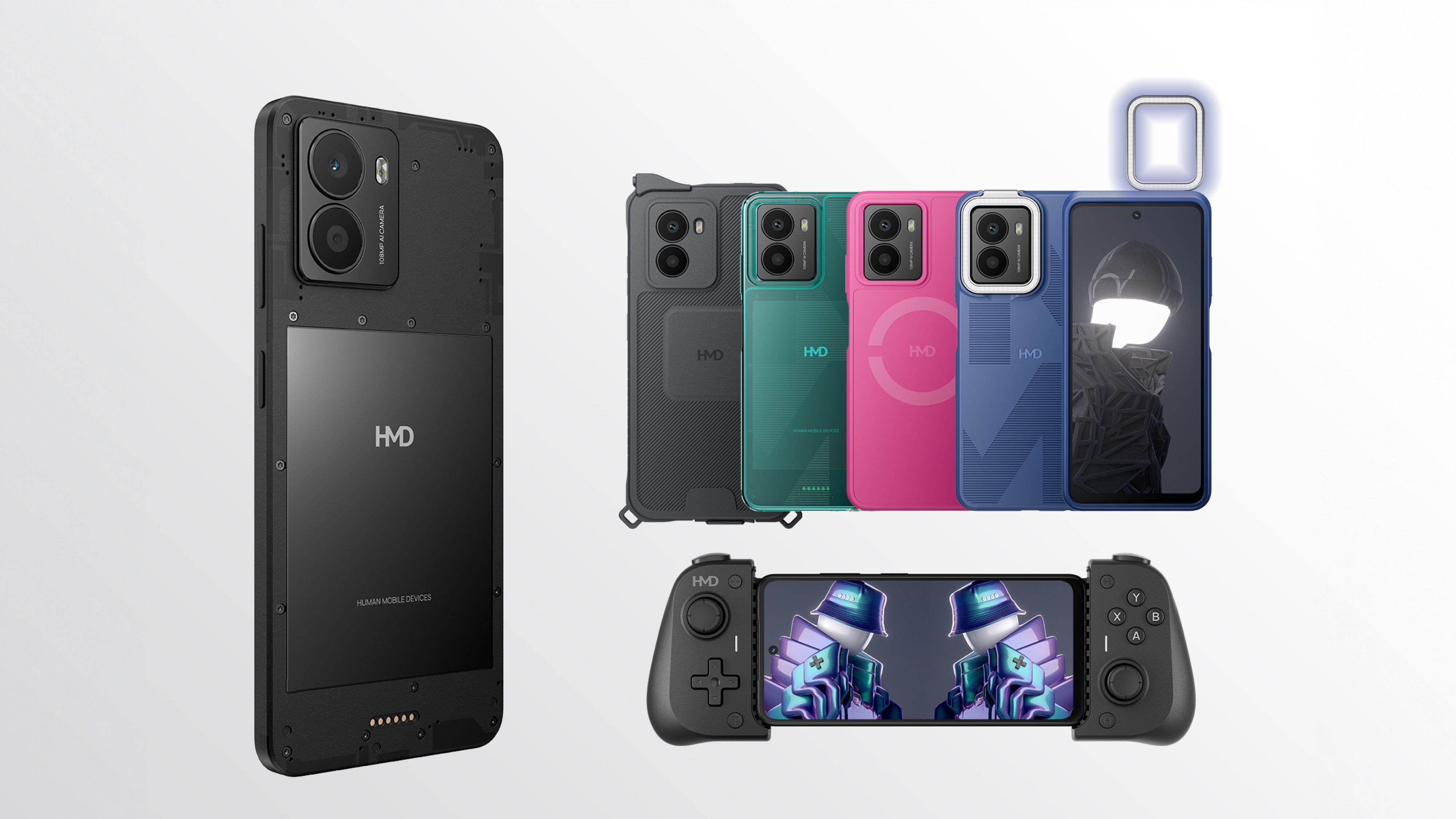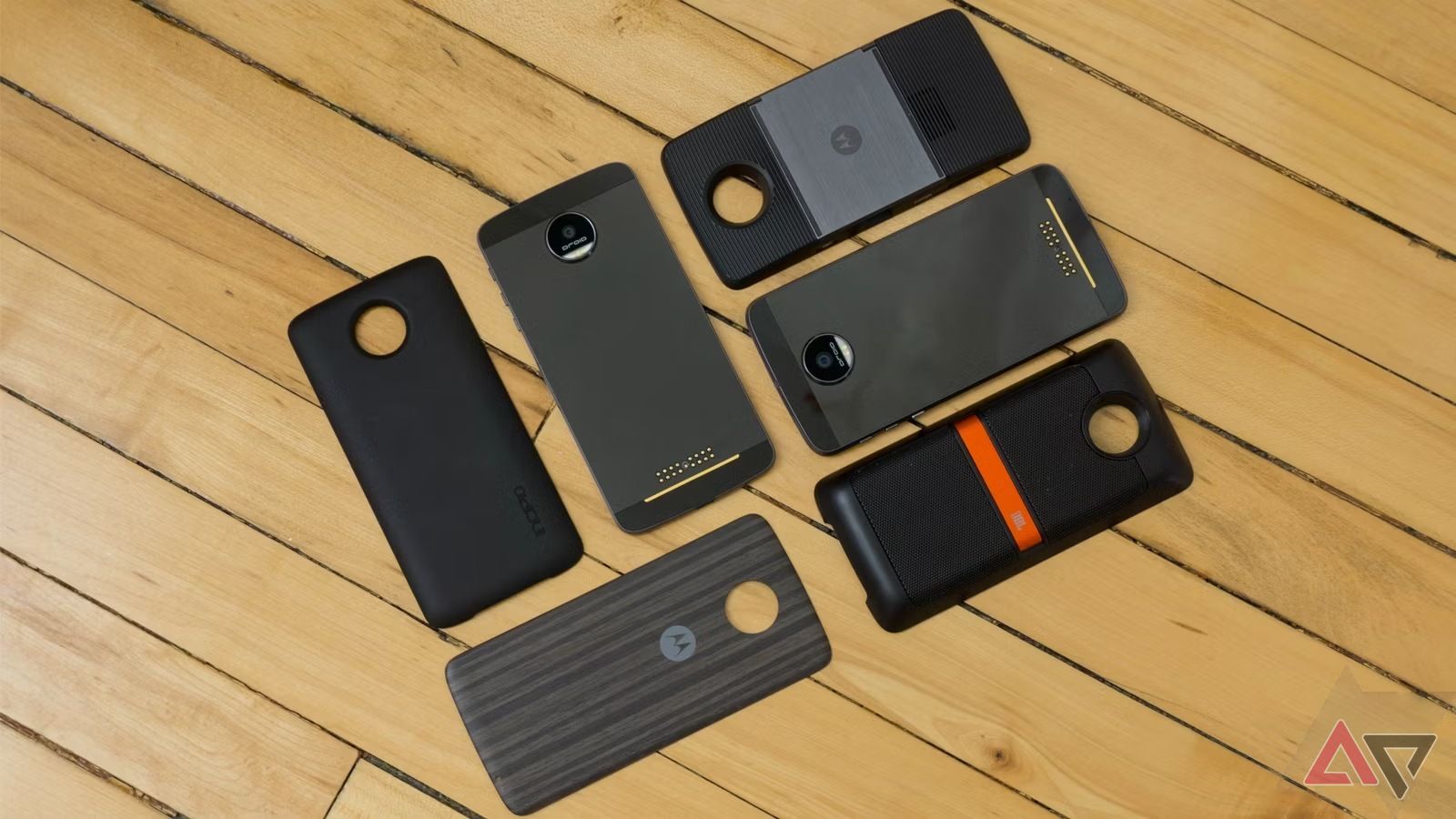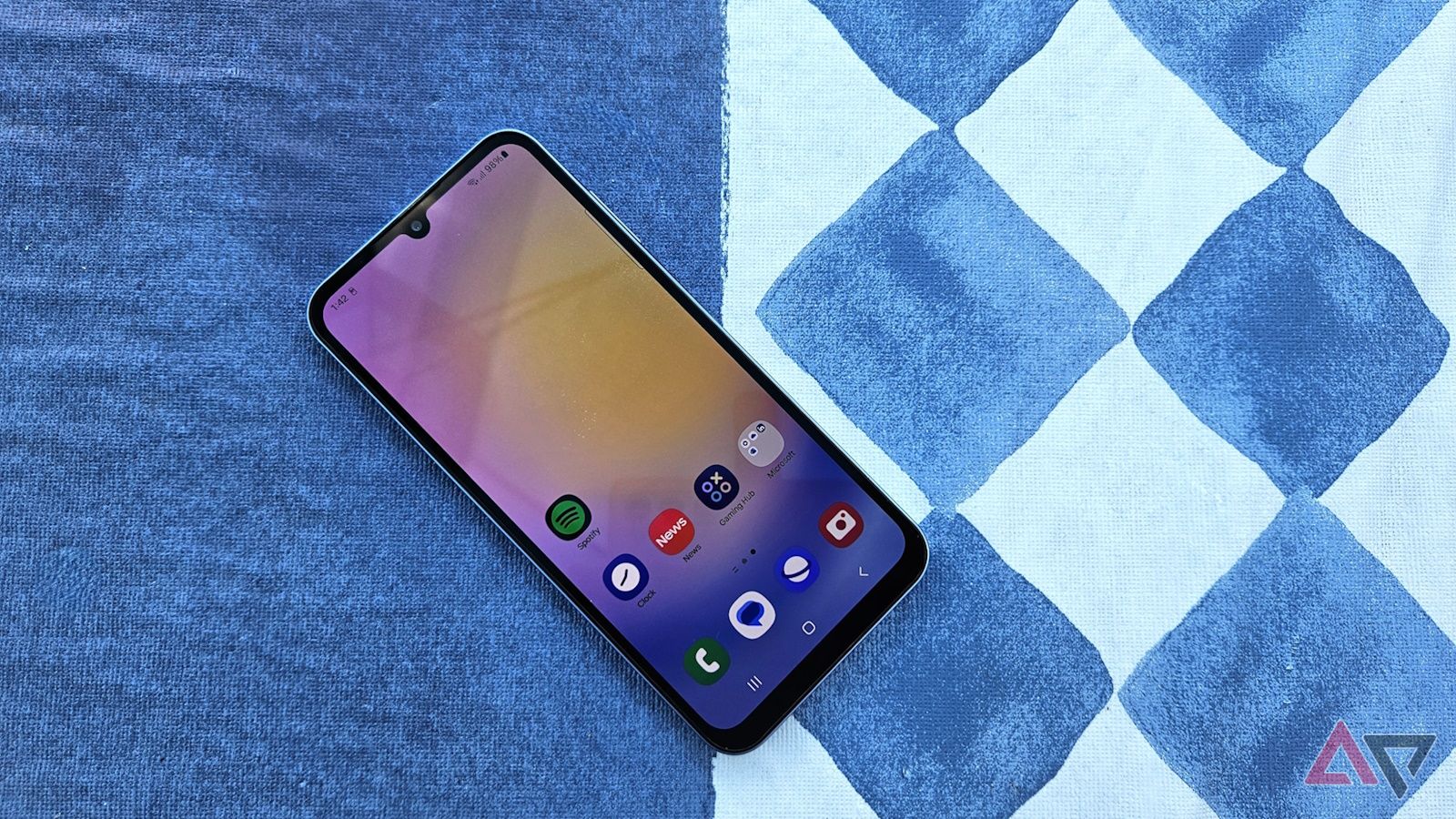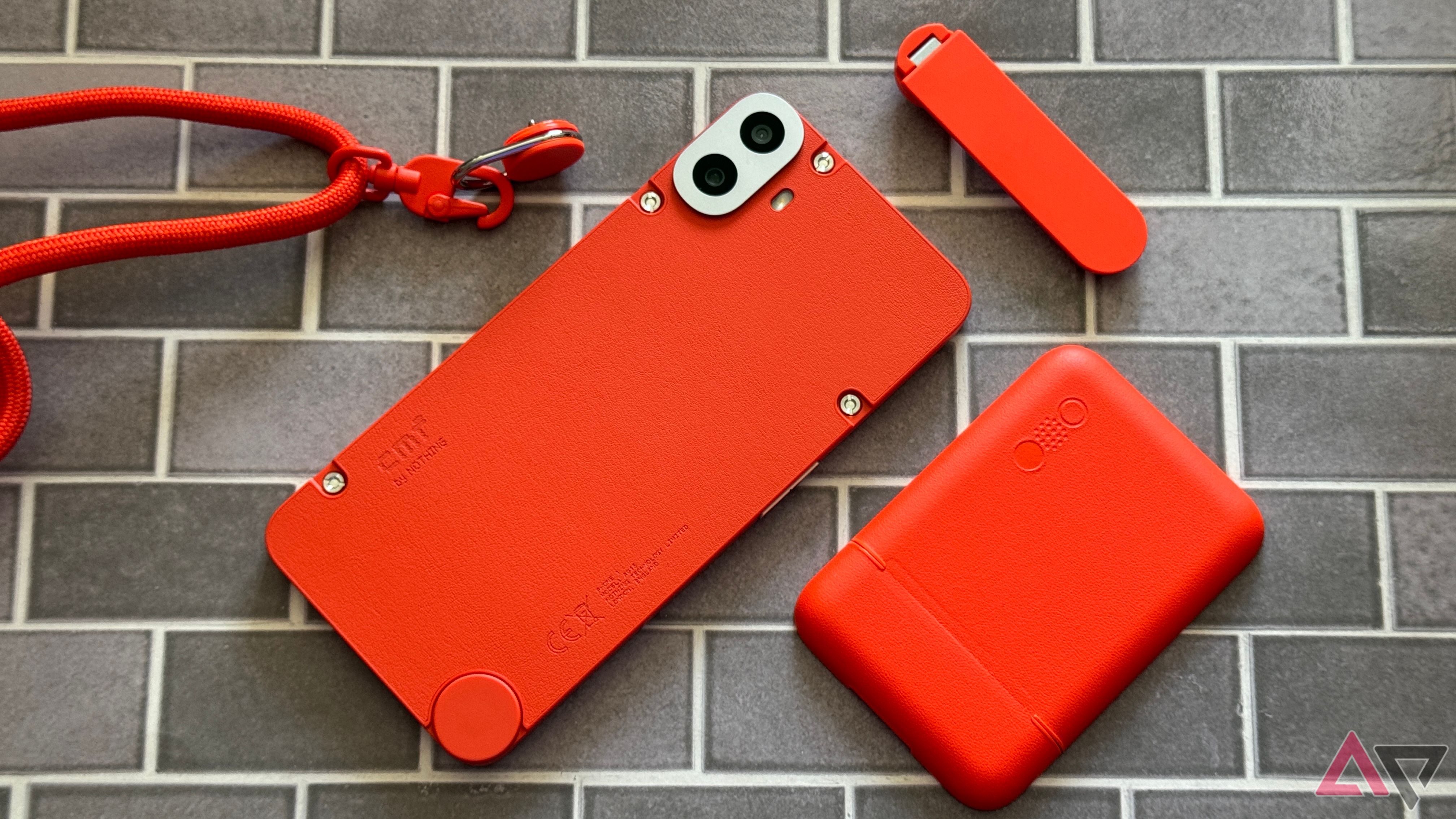Project Ara’s vision of a fully modular smartphone was interesting, but signal latency, form factor requirements, and the impossibility of industry-wide cooperation doomed it from the start. Moving away from the idea of vast, interchangeable selections of critical phone components, the LG Friends and Moto Mods lineups followed the philosophy of powerfully customized smartphones, but never got much traction, and died off with little fanfare.
LG and Motorola’s accessory concepts were, in a big way, ahead of their time. Had Moto Mods first hit the scene in 2024, the increasing popularity of 3D printing and DIY engineering may well have spelled a more enduring fate. With the HMD Fusion, the former maker of often rugged, moderately repairable (and potentially extinct) Nokia phones has taken up the modular add-on mantle.
Making your phone your own
With features limited (almost) only by your imagination and expertise
HMD’s recent approach to smartphones flies in the face of what big players like Samsung and Google are doing with their hardware. Instead of packing in the fastest, hottest components and charging a boatload, HMD’s aiming for the more pragmatic midrange market.
For now, only the phone itself is available for purchase, with first-party Smart Outfits slated for release between October and December. HMD’s international website lists four right now, with the promise of an additional add-on for gamers:
- Flashy Outfit: A ring light module for both front and rear cameras
- Wireless Outfit: A magnetic, wireless charging coil, typically limited to premium phones
- Rugged Outfit: An IP68-rated add-on for the heaviest use cases
- Casual Outfit: A colorful back panel that adds moderate protection from drops
- Gaming Outfit: A precision-built handheld gaming controller
(Source: HMD Global)
Looking back, Moto Mods comprised a decent selection of useful add-ons, including a battery pack, smart speaker, optical zoom lens, and video projector. These and more came courtesy of Motorola and its collaboration with various third parties, like Incipio and JBL, which still produce great accessories today.
But the Fusion Development Toolkit’s been ready for months, and that’s where HMD’s foray into modularity might have a leg up on its predecessors. Mainstream adoption of 3D printing, coupled with the vast online resources available for learning electrical engineering and coding, deliver nearly endless possibilities for publicly developed mods.
Smart Outfits and the Fusion’s USB host-device connectivity support offer the prospect of relatively obscure features that could be useful, but not to enough consumers for a manufacturer to build an entire phone around. A number of users pine for a slide-out keyboard or gamepad, a la the ancient Blackberry Priv or Sony Xperia Play, or the more recent Clicks Keyboard for iPhone. That’s on top of the specialties offered by Motorola and LG’s modular families of years past.
The Fusion also comes with the same Gen 2 repairability as its midrange sibling, the HMD Skyline, which allows screen, battery, back cover, and bent charging pin replacement. In theory, that could promise an especially long lifespan for HMD’s modular phone. But there’s one big hurdle to overcome if the Smart Outfit concept wants to really take off.
The HMD Fusion isn’t very powerful
It’s affordable, but middling performance limits its versatility
Alternatives like the Samsung Galaxy A25 deliver a better experience at similar prices
A $300 price tag pales in comparison to what flagships cost, which makes the Fusion readily accessible for the vast range of creative individuals who might be inspired to develop their own Smart Outfits. Naturally, budget-friendly phones come with tradeoffs, but HMD’s latest offering squeaks into the midrange without much headroom.
Its Snapdragon 4 Gen 2 system-on-a-chip should tackle everyday Android tasks without too much lag, but won’t win over anybody who enjoys mobile gaming — making the rumored handheld controller Smart Outfit a less-than-exciting prospect. Similarly, 6GB of RAM and 128GB of storage don’t promise much in the way of future-proofing, even discounting any advanced mods that might draw from precious processing power.
The main and selfie cameras do boast 108MP and 50MP sensors, respectively, but MP counts tell only a small part of the story, and the price point doesn’t instill much confidence in overall quality. The lack of premium processing power makes for a clear limitation on what Smart Outfits can provide.
Then there’s the issue of encouraging third parties to actually put in the work to develop new Outfits. Without any exciting internal hardware, the Fusion won’t inspire all the most skilled DIY engineers to make significant efforts. What’s more, HMD and Nokia phones of the last few years have all lost support for unlocked bootloaders, which further thrashes a phone’s customizability.
It’s understandable that HMD might not have wanted to make huge investments in research and development or top-shelf hardware, but it’s questionable that the Fusion will see enough popularity to realize Smart Outfits’ full potential. Finally, some of the concepts that Moto Mods got right, like a 10× optical zoom upgrade, are likely too advanced for all but the most experienced modders to attempt.
Competition and the future of modular add-ons
Will anybody else try?
The CMF Phone (1) is neat, but not particularly modular
One potential path forward — and this is complete speculation — is that HMD could replicate the Fusion’s form factor with a considerably more powerful future device, should the public show interest in Smart Outfits. Of course, that would mirror one of the downfalls of the Moto Z series, which stagnated quickly as it released with identical designs to continue supporting existing Moto Mods.
The CMF Phone (1) from Carl Pei’s iPhone-hunter Nothing brand had already attempted something like mods, but didn’t take the step of USB host-controller connectivity. The physical-only restriction of CMF Phone mods reduced its DIY options to things like tripod attachments, Swiss Army Knife-like multitools, and folding fans, none of which contribute much to a novel smartphone experience.
At the moment, no other company is rumored to have a hand in the modular game. And while there’s, theoretically, a glut of interesting things talented engineers could do, early indications are that the HMD Fusion might never see the mass appeal needed to inspire more powerful Smart Outfit-compatible devices, or anything similar from competing brands. But we certainly hope to be proven wrong, because the concept has a ton of potential.
Source link

